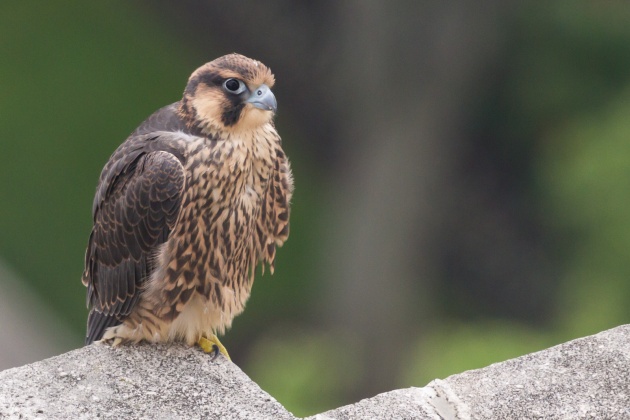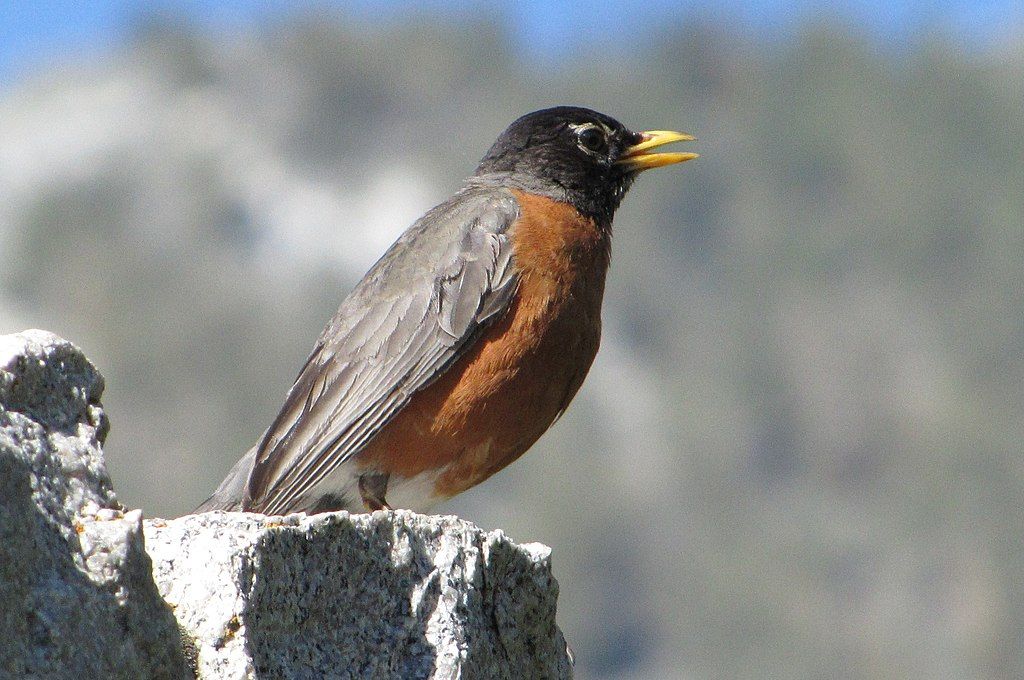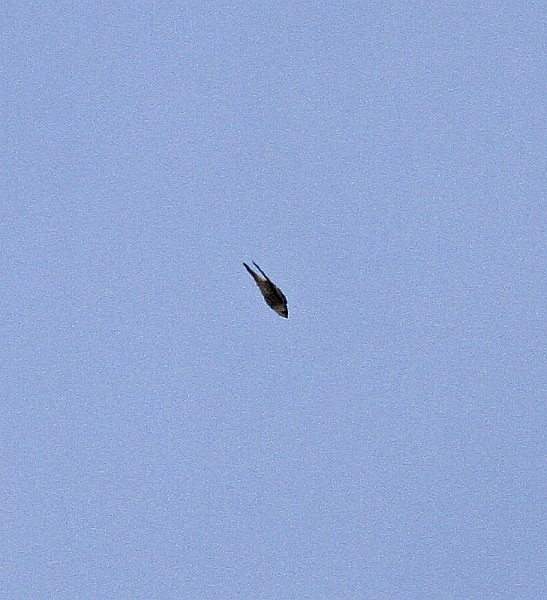
4 June 2021
How do you know if a peregrine chick has flown? Is that flying bird a chick or an adult? Here are some tips on what to look for.

1. Count heads to figure out if any have flown. You’ll have to be onsite to do this.
Count the peregrine chicks perched at the nest via falconcam and at the launch zone. If you count all of them they probably haven’t flown yet. If some are missing …

If some chicks are missing, walk around to find them using the clues below.
Each site is different. At Pitt, walk around the Cathedral of Learning.
2. Look for the parents: What are they looking at?
When a chick has newly flown one of the parents will perch near it and stare at it. At this early stage of flight the parent is guarding it.

3. Listen for peregrine “whining.”
When a young peregrine is hungry he whines loudly to get attention. A fledgling away from the nest will call very loudly saying, “I’m over here! Bring food!!” This is not a distress signal. It is “teenage” whining.
4. Watch and listen for upset songbirds warning of a predator.

Songbirds will raise the alarm when they see a young peregrine perched nearby. Most will make alarm calls, a few may dive-bomb to drive it away. American robins are the loudest and most likely to be nearby. Here’s a robin alarm call.
5. Juveniles look different in flight. They have pale tip on the tail.
The colors brown (juvenile) vs. gray (adult) are hard to tell at a backlit distance. However in June juveniles have fresh tail feathers while adults do not. Fresh tail feathers in both plumages have pale tips that glow when sunlight shines through them. If you see an obviously pale tail tip, chances are you’re looking at a juvenile.
Here’s a juvenile peregrine at Pitt in 2012.

Adults have worn off the tips of their tails by dragging them on the nest gravel for the past four months.

5. Juveniles have different flight behavior: In the first few days of flight juveniles flap a lot and will not stoop. They also land carefully, shown below.

As they get better at flying the juveniles flap less and land more confidently. However, it takes some weeks for them to master the stoop. In the first week of flight any peregrine flying like this (below) has to be an adult.

There’s always something new to learn about peregrines. Let me know what you see.
(photos by John English, Charity Kheshgi, Wikimedia Commons, Peter Bell, Dana Nesiti, Chad+Chris Saladin)
Oh my gosh Kate, I love the tip about the tail feathers!! So useful. Thanks! Have fun out there today.